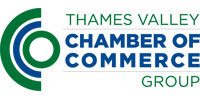(last updated June 2023)
What has been happening in the bridal wear sector
The bridal wear sector has had to adapt to a number of developments over the last decade or so, including the following:
- a long term decline in the number of weddings. According to government statistics marriages fell to their lowest level on record since 1838 in 2020 as the COVID pandemic closed venues
- legislation allowing couples to marry in venues other than in a church or registry office. This has boosted demand for non-traditional wedding outfits
- the average age for a woman to marry for the first time is 33.2 and 35.3 for men. For same sex couples, this was higher at 38.1 years for men and 34.6 years for women. This has prompted designers to create more sophisticated wedding dresses
- weddings are increasingly being paid for by the bride and groom rather than by their families. Because the bride is often earning a reasonable salary by the time she marries the average amount spent on the wedding gown has increased
- high profile wedding ceremonies has boosted the amount people are prepared to spend on their dream event
- a greater proportion of weddings are now second or third marriages
- more couples are choosing to get married in small, intimate ceremonies overseas (such as in the Caribbean)
- many bridal wear manufacturers now get their wedding gowns made in the Far East, where labour is cheaper. However this has led to longer delivery times so brides need to order their dresses early if they are not to be disappointed
- an increase in the number of winter weddings during the late 2000s and early 2010s as the economic downturn affected how much people could spend on their wedding day. Venues and catering are cheaper during the winter months
- an increase in the number of poor quality and counterfeit gowns sold online
These trends have created both difficulties and opportunities for bridal wear outlets.
Because the number of weddings has been falling, the market is oversupplied and competitive, with many new entrants to the bridal wear market. On the other hand, despite the recent economic downturn the average amount spent each year on weddings is still considerable. Latest estimates put the average cost of a wedding at over £24,069 (including the rings and honeymoon), showing that couples are prepared to spend a lot of money provided that they are happy with the service offered. For the bridal wear outlet this might mean making sure that bridal wear ranges cater for both the traditional, first time bride and for the mature woman getting married for the second or third time. The increase in winter weddings means that bridal wear shops would do well to offer a range of warmer wedding dresses. Brides getting married overseas are choosing lighter weight fabrics and slimmer silhouettes. Opportunities might exist to offer a similar range of services to gay couples getting married.
You'll need to decide whether:
- there is sufficient demand in your area to support your proposed business
- you will be able to compete against other outlets selling bridal wear
- you will be able to weather any significant further fall in the number of weddings
Keeping up to date with developments in the bridal sector
Joining a trade association is an excellent way of keeping up to date with developments in your industry.
Bridal wear retailers in the UK are represented by the Retail Bridalwear Association (RBA), which aims to promote high standards within the industry. Members must have been established for more than five years and comply with a professional Code of Conduct. RBA members' customers are protected against loss of their deposit/gown if the retailer ceases trading involuntarily (the RBA Brides Protection Scheme). You can contact the RBA at 106 Broad Street Mall, Reading RG1 7QA. The RBA website contains more information.
The British Bridal Suppliers Association (BBSA) represents manufacturers, wholesalers and importers of bridal goods.
Subscribing to a trade journal or magazine is another excellent way of staying up to date. Bridal Buyer journal keeps retailers up to date with trends in the bridal industry. You can take out a subscription online - visit their website to find out more.
Wedding trade shows and bridal fayres
You can get a lot of useful information if you go to a trade show for the bridal wear sector. The National Wedding Show is held at Olympia in London, in Manchester, and at the NEC in Birmingham. The Harrogate Bridal Show is held in Harrogate, in September. The London Bridal Show is held at Olympia in the spring. The National Asian Wedding Show is held every autumn in London and is also held in Bradford and Birmingham. All of these shows have websites containing more information.
More bridal shop content from across the Donuts
- How to start a bridal shop
- Bridal shop legal issues
